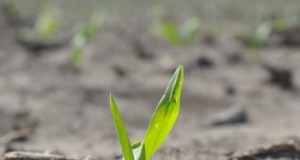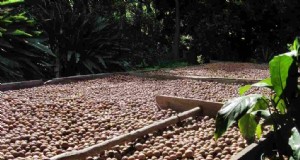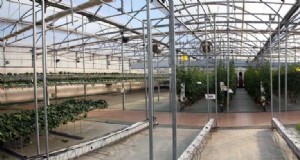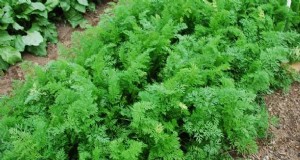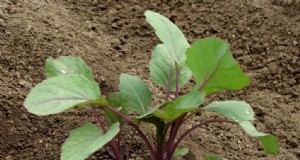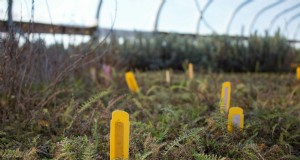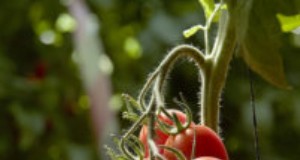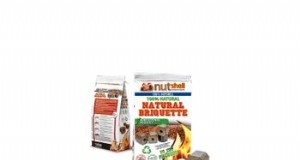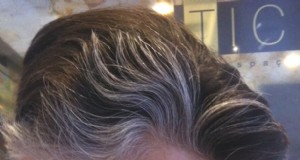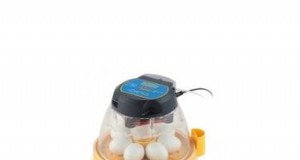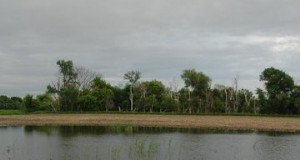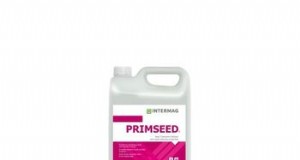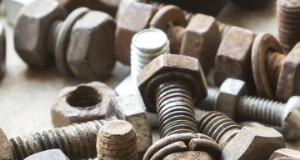NS 私 NS – NS 刈り取り NS は NS NS ultu NS
ムレルとナマズは、脂肪含有量が少なく、筋肉内の棘が少ないため、自尊心と市場の需要が高いことで知られています。www.modernagriculturefarm.com空気を吸う魚は丈夫で、付属の呼吸器で大気を呼吸することができます。これらの付属呼吸器の存在により、これらの魚は水面外で数時間生き残ることができます。これらの付属呼吸器は、 クラリアス 、 迷路器官 チャンナ 、 浮き袋 ヘテロプネウステス 、 上記の魚の鰓室、 などと空気を飲み込むことができます。これらは、浅い汚水などの溶存酸素が少ない地域で培養できます。 遺棄された池や沼。水から生きる彼らの能力のために、 彼らの文化には、低リスクとシンプルな管理が含まれます。
インドで、 アンドラプラデーシュ、 アッサム、 ウッタルプラデーシュ、 マディヤプラデーシュ、 タミルナドゥ、 カルナータカ州、 マハラシュトラ、 ビハール州とメガラヤ州は、空気を吸う魚の最も重要な自然漁業を支えています。これらの魚は本質的に肉食性であり、補助給餌に非常によく適応します。浅瀬で成長するエアブリーザーによる呼吸によるエネルギーの浪費はあまりないので、 良好な収量が期待できます。
空気呼吸する魚の培養可能な種は図9.1です。
NS NS NS nn NS NS NS NS NS それ u s –大きなまたは縞模様のムレルまたはスネークヘッドフィッシュ
NS ハン NS punctatu s –斑点のあるムレル
チャンナ marulius –ジャイアントマーレル
クラリアス batrachus – Magur
ヘテロプネウステス fossilis –シンギ
アナバス キノボリウオ –鯉または登山のとまり木。
これらのうち チャンナ striatus 市場で最も需要が高く、価格も高くなっています。次善の策は クラリアス と ヘテロプネウステス 。上記の種の文化は有益です。
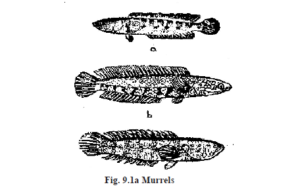
a)Channa marulius b)Channa straitus c)Channa punctatus
Cu l turab l e 範囲 NS
空気を吸う魚の養殖には、深さ50〜75cmの浅瀬が必要です。空気を吸う魚の養殖用の池は、化学物質で受精させる必要はありません。空気を吸う魚は、小川のような流水システムのケージで養殖することもできます。 運河や貯水池のような手に負えない水。空気を吸う魚の養殖は、従来の養殖可能な鯉の種に適さない水域や鯉の養殖池にも同様に適応できます。浅い池は魚に便利です、 魚は大気中の酸素を摂取するために水面に移動するのに費やすエネルギーが少なくて済みます。
見る NS collectio NS
プラーチョンの種、 magurとsinghiは天然資源から集められ、 誘導育種で成功したにもかかわらず。今日も、 自然から集められた種子は、貯蔵のための最も信頼できる材料の供給源であり続けています。ムレルは2年で成熟し、1年を通して繁殖することが知られています。 2〜4cmの稚魚は一年中、天水溝や雑草が豊富な浅い水域から集めることができます。ただし、ピーク産卵はモンスーンの直前に発生することが知られています。
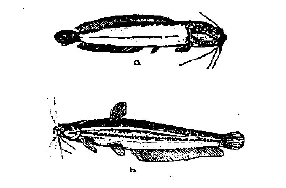
a)Clarias batrachus b)Heteropneustes fossilis
卵から出てきた幼虫は群れをなして移動し、大量の採集はいつでも簡単です。幼魚はショールズで動く傾向がないかもしれません。巨大なムレルの稚魚は、その濃い灰色の体と、目から尾鰭までの横方向のオレンジ黄色の帯によって識別できます。剥ぎ取られたムレルの稚魚は、真っ赤な体に赤みがかった金色の帯があり、目から尾鰭までは濃い黒色の帯があります。斑点を付けられたムレルフライは、金色の黄色の横方向の帯と背中の中央の背側の黄色い線が付いた暗褐色の体で識別できます。
プラーチョン文化では、 稚魚よりも幼魚をストックする方が良いです。共食いはムレルフライに見られます。誘導繁殖によって生産された稚魚の生存率は低く、産卵を維持して稚魚段階まで成長させることは困難です。スポーンは、卵から出てから2日間は何も食べません。したがって、 稚魚は、別々の池で補助餌を受け入れるように訓練する必要があります。補助飼料はゆで卵で構成され、 カイコの蛹、 みじん切りにしたゴミ魚とワーム、酵母とビタミンB。
それは彼らの総体重の20%の割合で約15日間与えられます。稚魚は1ヶ月以内に4-6cmの長さの幼魚期に達します。
ナマズは年に2回繁殖し、繁殖期は雨季がピークです。マガーの幼魚は、背びれと粘板岩の色が長いことで識別できます。シンギの幼魚は背びれが短くピンク色です。鯉の幼魚は、尾柄の黒い斑点と体の背面の緑がかった色合いで識別できます。マグラは水面下の外灘に深さ25cmの穴を開けます。受精卵は草に付着し、雄によって守られています。 2、 000 – 15 小さな細かいメッシュのハンドネットを使って各穴から000匹の稚魚を集め、長さ約5cmの幼魚期に達するまで苗床で飼育することができます。
マガーは、稚魚を生産するために池で養殖することができます。外灘の縁にワイヤースクリーンの1X 1mコンパートメントが作られています。各コンパートメントの中央に、 直径30cmの穴が掘られ、水生植物はほとんどありません。男女を解放した後、 約5 10日以内に各コンパートメントから000個の稚魚を集めることができます。オスとメスは小さな土の池で飼育することもできます。それらは20をストックすることができます 000 /池で、ろ過した動物プランクトンまたは刻んだ魚粉と落花生油粕のいずれかを与えます。稚魚は苗床で15日間飼育できます。
シンギの種を集めるピークシーズンは、水田が収穫され、低地の畑が露出する冬前の時期です。
見る NS tr NS nspor NS
空気を吸う魚の稚魚や幼魚は、酸素を詰めることなく輸送できます。稚魚や幼魚の輸送には、ポリエチレンドラムまたは鉄ドラムが使用されます。キャリアは、大気を呼吸するための習慣的な浮上のために十分なスペースを持っている必要があります。キャリアは、次のような少量の水生雑草を持っている必要があります セキショウモ、 クロモ 、 フサモ と マツモ 。雑草は、輸送中に魚が飛び跳ねるのを防ぐのに役立つ場合があります。距離が遠い場合は、 酸素を詰めたポリエチレン容器に入れて輸送することをお勧めします。
ポン NS ma NS アゲメ NS NS
苗床は約10〜15 m2、 50cmの水柱を持っています。これらには、1ヘクタールあたり20〜150万羽の稚魚がストックされています。仕入れる前に、 肥料は、生の牛糞を500 Kg / haの割合で単独で行います。昆虫を根絶するための石鹸–オイルエマルジョンが保育園の水に適用されます。天然資源から集められたマグルとシンギの稚魚と幼魚は、苗床管理を必要とします、 しかし、マーレルは、飼育する前に苗床で訓練する必要があります。養殖場の管理後、幼魚は飼育池に移されます。
Stoc k の NS
ストッキングには均一なサイズの幼魚が選ばれます。幼魚を2%KMNO4溶液で5分間消毒するか、200ppmのホルマリン溶液に50秒間浸してから保管します。負傷した幼魚を0.3%アクリフラビンで5分間処理します。
これらの魚は、登ったり穴を掘ったりして逃げることができます。したがって、 池の堤防は重い丸太や木でしっかりしている必要があります、 または竹の杖またはワイヤースクリーンで約50cmの高さにフェンスで囲みます。
より多くの幼魚を彼らの養殖システムに蓄えることができます。 40、 000- 60、 000システム。
ナマズの幼魚/ haは単作で貯蔵することができます多作システムでは20 000 – 30 猫1ヘクタールあたり000本
魚はストックされるかもしれません。モノカルチャーシステムでは、 15、 000本/ haの巨大なムレル、 20、 縞模様のムレルの場合は000 / ha、20 000 – 30 斑点のあるムレラーレの場合は000 / haがストックされています。多培養システムでは、 縞模様と斑点のあるムレルは、20の割合でストックされる可能性があります 1:1の比率で000本の幼魚/ ha。
鯉やナマズなどのムレルの多養殖も、適切な手入れと管理を行うことで可能です。空気を吸う魚の種は、コイが最低300グラムに成長したときにのみ貯蔵する必要があります。 空気を吸う魚が鯉を捕食しないようにするためです。これとともに、 空気を吸う魚の収穫によって追加の収入が得られるだけでなく、 だけでなく、コイの成長を高めることができます。後者は可能です、 食物と空間を求めて鯉と競争するかもしれないゴミ魚として、 成長するエアブリーザーによって根絶されます。
フィードイン NS
成長するエアブリーザーのための豊富な食料供給を維持するために、 飼育池には、カエルのオタマジャクシやゴミ魚などの動物の餌が豊富に含まれている必要があります。この食料源が十分でない場合、ティラピアはムレルやナマズの池でも育つ可能性があります。魚の養殖にも使用され、より経済的な乾燥した海のゴミ魚。内臓または食肉処理場の廃棄物を含むナマズ、または米ぬかと油粕を1:1:1:1の比率で混合した乾燥シルクワームの蛹に餌を与えることができます。 1:1:1の比率の米ぬかとバイオガススラリーは、シンギに成功した低コストの飼料を提供しました。米ぬかと家禽の飼料は3:1で、バイオガススラリーと米ぬかは1:2で、体重の5〜8%の割合で与えられます。
停滞した池での8か月間の半集中的な文化の間、 ヒレナマズの資源は、飼料の利用率を高めるために、1日の暗い時間帯に毎日次の速度で給餌することができます(表9.1)。
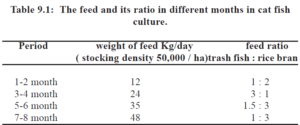
飼料は、外灘から少量で池に放流されるか、池のすべての魚に飼料を確実に提供するために、飼料の放流に加えて、岸の近くに下げられた飼料バスケットで提供されます。ライトトラップはマーレル池に設置できますが、 それによって昆虫は光に引き付けられ、たんぱく質が豊富な食物としてムレルによって利用されるかもしれません。
訓練されたムレルの幼魚は、水に浸した安価に乾燥した海のゴミ魚も受け入れます、 これは、以下の給餌スケジュールに従って提供される場合があります(表9.2)。食肉処理場の廃棄物やカイコの蛹も動物性タンパク質の原料として使用できます。
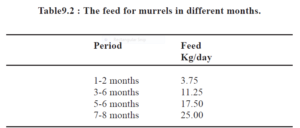
Gr o wt NS NS NS NS NS NS od u ct 私 o NS
ムレルとナマズは、それぞれ数ヶ月の期間で市場性のあるサイズに達します。管理慣行が適切である場合、 巨大で縞模様のムレルは、1〜2Kg /年の成長を達成することができます。および0.75Kg /年。それぞれ、 一方、斑点のあるムレルは160グラムに成長します。 8ヶ月で。ナマズは、ムレルと比較するとゆっくりと成長することが知られています。 Magurとsinghiはそれぞれ0.2Kgと0.1Kgに成長します。推奨フィードでの変換率は約2:1です。
補助食品として飼料魚を使用したムレルは、約4トン/ ha /年を産出します。乾燥したゴミ魚と米ぬか補助飼料を使ったマガー、 10トン/ヘクタール/年の生産を与えます。シンギは4.4 /トン/ヘクタール/年の収量を与えます。プラーチョンと鯉の多文化、 米ぬかを食べて、 マスタードオイルケーキとゴミ魚、 11.8トン/ヘクタール/年の生産量を与える、 一方、米ぬかとゴミ魚を与えられたmagsurとsinghiは、5トン/ ha /年の収量をもたらします。 3種のムレルの混合培養では、水に浸して乾燥させた海産のゴミ魚と新鮮なカイコの蛹を餌として与えた場合、4トン/ ha /年が発生します。集中的な文化では、magurは7トン/ ha / 5ヶ月を与えることができます。
NS ul NS あなたは e w 私 NS NS ca NS NS NS
インドと中国のコイの飼育密度が5000 / haで、1000匹のマガーの幼魚は、2518 Kg / ha /年のコイと3711Kg / ha /年のマガーを生産します。これは、多文化がより収益性が高いことを示しています。 コイの養殖システムにmagurを含めると便利です。飼育密度は20です。 000 / haのマグルと残りのコイ(コイの部分収穫後)の生産量は、米糠の50:30:17:3の比率で3.96トン/ ha /年になります。 魚粉、 補助飼料としての落花生油粕とミネラル。マグールは、コイの代わりにコイの複合魚養殖に適していることがわかりました。マガー、 鯉とシンギは、高価なコイのマカナと一緒に文化にも適しています、 エウリュアレー フェロックス 。
ハー v エスティン NS
夏の季節は、池から魚を呼吸する空気を収穫するのに理想的です。池は排水され、魚はスクープネットまたはハンドネットの助けを借りて収穫されます。彼らの高い需要と市場価格のために、 これらの空気の文化–ブリーザーは、簡単な管理手法で養殖業者に有益な収入をもたらします。
NS NS NS e カルト u NS e
空気–ブリーザーはケージで培養することもできます。檻は流水で割った竹でできたマットで作られています。最適なケージ面積は、2m X 1m X1mのサイズです。ケージの上部は半分マットで覆われ、覆われていない部分は餌を与えやすく、魚の逃げを防ぐためにネットで覆われています。合成繊維メッシュは、ケージの準備にも使用されます。
Magurは200 /ケージの割合で在庫があります。 乾燥したゴミ魚に体重の10%を与え、 油粕と米ぬかを作り、10〜12Kg /立方メートル/年を生産します。 Singhiは、飼育密度が100〜150 /ケージで、カイコの蛹の体重飼料の10%で12〜20 Kg/cu.m。/yrを生産します。 米ぬかとからし油のケーキ。鯉は、シンギと同じ餌で4.2 Kg / cu.m./yrを生産し、飼育率は50〜100 /ケージです。斑点のあるムレルは、ゴミ魚と米ぬかで4Kg /立方メートル/年を生産します。したがって、 空気を吸う魚の養殖は非常に収益性が高く、 動物性タンパク質の豊富な供給源と同様に。この魚はデレカシーと見なされます、 そして、市場で非常に高い価格と継続的な需要を指揮しています。
NS NS OU NS CU L NS あなたは E
マスは、食用魚またはスポーツフィッシュとして栽培されています。 スポーツフィッシャーマンのために天然水に放出されます。マスは魅力的で人気がありますが、 アクティブな戦いの魚と非常に高品質の肉を提供します。マスは世界中で放流され、水中で養殖されています。マスは非常に長い間、米国で商業規模で栽培されてきました。ヨーロッパでのその文化は400年前にさかのぼります。冷水魚です。それは主に川に生息し、 ストリーム、 小川、 湖や池。インドでは、カシミールで発見されています。 ヒマーチャルプラデーシュ州、 ウッタルプラデーシュ、 ニーラギリ、 コダイカナルとムンナールの高地。
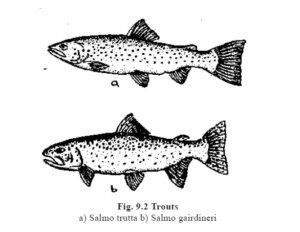
マスの多くの種が栽培されています、 しかし、それらの中で最も一般的な3つは、ニジマスです。 スラモ gairdneri また Oncorynchus 私のキス、 ヨーロッパのブラウントラウト、 S.trutta (図9.2)とカワマス、 イワナ fontinalis。 マスは流線型の体を持っています、 狭い鰓開口部と減少した鰓。トラウトは、高度に酸素化された水と凝固点温度に適応しています。マスは、しがみついたり穴を掘ったりする習慣があり、移動の大きな力を持っています。口は小石からの食物収集のために唇を荒らすように変更されます、 岩、 NS..
NS NS aw NS の NS
の産卵期 S.gairdneri 9月から2月までです。 S.trutta 10月から12月までです S.fontinalis 10月から1月までです。トラウトは卵を保護するために砂利の土台を好み、卵は砂利や破片に付着します。マスは巣を作り、川床に産卵します。栽培者は人工授精を許可します、 なぜなら、河床施肥は人工授精よりも孵化率が低いからです。日長と水温の操作は、性腺の成熟を誘発するために使用することができます、 若い魚が一年中生成されるように。トラウトは上流に泳ぎ、成熟池まで育てられているため、成熟時またはその近くで捕獲されます。ひな魚は水が流れる小さな池に置かれ、ジャンプを防ぐために網で覆われていることがよくあります。 1人の男性の白子は、2人の女性を受精させるために使用できます。 より多くの雌が少数の雄で飼育されるように。
トラウトは性的二形を示します。繁殖期にはオスの色がより明るくなり、下顎にくちばしができます。女性は拡張した腹を発達させ、生殖乳頭は大きくなり、赤みがかった色になります。それらが完全に成熟すると、 ミルトや卵は腹部の通気口にほとんど圧力をかけずに出てきます。マスが熟すと、 雌の魚は剥ぎ取られ、卵は黒い色のエナメルまたはプラスチックの容器に集められ、雄のミルトが加えられ、受精のために羽ペンと完全に混合されます。混ぜた後、水を加えて卵を膨らませます。混合前に水を加えないでください。 なぜなら、水の存在下では精子の運動性が大幅に低下するからです。より良い生存率を確保するために、 卵は少量の食塩水(10リットルの淡水+90グラムの食塩+2グラムの塩化カリウム+3グラムの塩化カルシウム)に集めることができます。受精卵は緑がかった色になり、「緑」として知られています。 その後、孵化場に移されます。移す前に、異物と死んだ卵を取り除きます。
NS ra ns NS o NS NS で 私 o NS o NS NS 敗走 e gg NS
マスの受精卵(24時間硬化)は、20×30×20cmの段ボール箱に入れて輸送されます。段ボール箱の内側は発泡スチロールの裏地で裏打ちされています。 2つの湿ったスポンジまたはコットンパッドが配置されています、 1つは下側に、もう1つは上側にあります。約4個入りの多孔質ポリエチレンバッグ 湿ったスポンジとコットンパッドの間に000個の卵を入れます。低温を維持するために、IKgの砕氷が入ったポリエチレンバッグが保管されています。 上部パッドの上。これらの段ボール箱は、さまざまな場所に輸送されます。
ハッチャー y テック NS ニケ NS
マスの卵は、平らで水平に配置されたトレイを備えたコンクリートのトラフに入れて孵化させます。 インキュベーターまたは瓶。孵化場には、ろ過されたシルトを含まない循環する淡水を提供する必要があります。昔はバスケットが培養に使われていました。垂直フローインキュベーターが最も一般的です。それは多くのステンレス鋼を持っています、 ガラス繊維の、 アルミニウム、 または木、 またはPVC、 またはプラスチックトレイ、 上下に配置。トレイの底には穴あき亜鉛シートが付いています。 さまざまなトレイを水が確実に通過するようにするためのガラスグリルまたはメッシュクロス。サイズは180X 30 X 10cmから500X 100 X 50cmまでさまざまです。各トレイには、上部の卵バスケットと、バスケットが置かれる下部の穴あきコンパートメントがあります。卵は孵卵のためにバスケットに入れられます。水は、卵が入っているバスケットを通って流れるようにトレイに導入されます。 次に、下のトレイまで下がって、そのバスケットを通って上に、以下同様にインキュベーターを通ります。卵を通るこの上向きの水の流れは、通気の増加を可能にし、代謝物の除去を容易にします。
孵化ジャーは、マスの卵の孵化にも使用されます。それは底に砂利のベッドが付いている0.5mmメッシュの電流を通されたスクリーンから成っています、 入口のすぐ上。この砂利床は、不要な粒子を除去するためのフィルターとして役立ちます。卵は孵化のためにフィルターの上に置かれます。水が入口を通過し、 フィルターと卵を通して上昇し、出口から排出されます。孵化後、 孵化したばかりの子は、瓶の中でしばらくの間維持されます。
孵化期間中、卵は非常に敏感です。新しく受精した卵は、直射日光にさらされると殺される可能性があります。インキュベーション中、 水は動いていて、酸素含有量が高い必要があります。インキュベーションは通常、8°〜12°Cの温度の水中で行われます。稚魚は、それらがアクティブになり、給餌を開始できるようになるまで、トレイに保持することができます。それらは、天然水での貯蔵のために放出することができます。
Cu l 火 NS o NS NS rou NS NS
稚魚は、卵黄嚢を完全に吸収する前に、小さな飼育トラフで飼育されます。 人工飼料での生活を紹介します。その後、それらは高度な稚魚段階に飼育するために養殖池に移されます。保育園の池は、コンクリートまたは石壁で、2.5 X 1 X 0.75mから9X 1 X 0.75mのサイズにすることができます。水の流れは100リットル/分に維持することができます。保育園の池の中。
高度な稚魚は、飼育池やレースウェイで成魚に飼育されます。飼育池は自然の水域であり、 レースウェイは単なる流水魚のいる池です。レースウェイのサイズは、深さ1.5 mで20〜100m2の範囲である必要があります。一連のレースウェイが小川または川の両側に建設されています。各レースウェイは小川から水を得て、水は反対側にある出口を通ってレースウェイから出ます。亜鉛板スクリーンは、入口と出口で使用されます。水の流れは50リットル/秒に維持されます。 川から池へ。アメリカでは円形と楕円形の池が使われています。在庫率は、5〜10 Kg / m2を生成するように制限される場合があります。レースウェイでも200Kg / misの高生産が可能です。 管理が良ければ。
マスのケージ養殖も一般的です。実験では、 幼魚はケージに1.4Kg / m2で貯蔵され、3匹が給餌されました。 % 毎日彼らの体重の。これらのマスは27-88グラムに成長しました。 2ヶ月で。トラウトに与えられる飼料には、牛の脾臓が含まれます。 心臓と肺、海洋または淡水魚のゴミ。多くの市販のマス飼料が市場で入手可能です。マスは1日3〜4回給餌されます。トラウトに餌を与える方法はたくさんあります。飼料は水面に噴霧され、 または、飼料をバッグまたは池の隅にあるコンテナに保管することもできます。デマンドフィーダーに使用され、 マスがトリガーにぶつかるたびに、餌が水中に放出されます。 または自動フィーダーも使用できます。ジャーとドラムは、マスの稚魚の飼育にも使用されます。
Se w ag e – Fe NS NS 私 NS NS Cu l 火 NS
下水は曇っています、 私たちの家のトイレやキッチンからの汚れた臭いの液体。それは、溶解状態または固体状態で分散したミネラルと有機栄養素を持っています。都市化により、下水処理は世界的な問題となっています。それはデモフォラの効果です、 つまり、人口の衰えることのない成長。近年では、 下水は内水の主要な汚染物質になりました、 特に川。それは多くの流行の原因です。それは土壌と水の生態系への深刻な脅威の原因です。廃水処理へのアプローチは、主に水産養殖を含む生態学的にバランスの取れたシステムによる再利用またはリサイクルの概念でこの残留物を利用することです。淡水池の肥沃度を高めるための下水排水の有用性は、世界の多くの国で長い間知られています。
生産される下水量は、3.6 mm3 / d(1日あたり百万立方メートル)または800 mg / d(1日あたり百万ガロン)のインドです。約30%(1.9 mm3 / d)が都市部で生産されています。これらのセンターでは、1.3 mm3 / d(インドの1日の合計の20.4%)のみが処理されます。国の1日の合計の80%近くは、まだ処理および利用されていません。インドでの1日の下水生産から得られる肥料の量は約0.126トンです。これは46m.tonnes /年に相当します。一日の下水からの肥料は、一年生の魚の0.1メートルヘクタールを栽培するのに十分です。下水は魚の養殖にも役立ちます。インドでは、12の地域をカバーする130以上の下水養殖場しか見つかりません。 000ヘクタール。カルカッタ近郊のVidyadhari下水供給漁業はその一例です。 漁師がカルカッタの下水処理システムを最大限に活用しているところ。ここでの魚の収量は約1です。 258キロ/ヘクタール。高い飼育能力は、魚の養殖のための追加の水源として機能し、魚の生産を強化する可能性と組み合わされています。
Co NS ポジ NS io NS o NS セワ NS e
下水道の組成は場所や季節によって異なります。水は下水(99%)の主成分であり、下水に含まれる固形懸濁液は1%にすぎません。インドの町の下水には平均して52ppmの窒素が含まれています。 16 ppmリン、 45 ppm potassium and 350 ppm biodegradable organic matter. The organic carbon component is 25-40 ppm, the ratio of carbon and nitrogen being 1:3. Salts of several heavy metals such as Zn, Ni, Cr, Pb, etc. are also found above the permissible levels in sewage. The organic refuses in the sewage have proteins, carbohydrates and fats in varied proportions depending on the nutritional status and food habits of the population. Among carbohydrates, readily degradable starch, sugar and cellulose are detected.
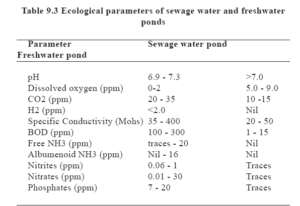
Some ecological features of different waters are mentioned in Table 9.3. Sewage water has high BOD (Biological Oxygen Demand) and Oxygen Consumption (OC) values. Dissolved oxygen becomes depleted in sewage water due to high oxygen demand and low photosynthetic rate. Photosynthesis is low because of poor illumination as the suspended solids in sewage water obstruct sunlight.平均して、 strong, medium and weak sewage consist of 1200 ppm, 720 ppm and 350 ppm of total solids respectively, out of which 850 ppm, 500 ppm and 250 ppm occurs in a dissolved state and 350 ppm, 220 ppm and 100 ppm is found in suspended form. Dissolved salts being very high in sewage water, manifest high specific conductivity. Production of acids in high amounts render the water acidic, making the medium unfit for supporting life (Fig. 9.3). Acidity of water below pH4 is known to kill the flora and fauna.
Sewage enriches water with organic matter that begins to decompose aerobically thereby depleting dissolved oxygen and leading to anoxic condition. Anoxia causes non-mortality of animals, adding organic matter further to the already rich organic content. In the absence of dissolved oxygen the organic matter undergoes anaerobic decomposition as a result of which obnoxious gasses like H2S, CH3 and CO are produced. These gasses besides being toxic, react with water to form acids.
Immediate effect of sewage on the biota is eutrophication. Sewage water stimulates rapid growth of phytoplankton leading to an algal bloom followed by rapid increase in zooplankton. For utilizing sewage in aquaculture, the properties such as the concentration of dissolved and suspended solids, 有機炭素、 nitrogen and BOD are essential.
マイクロ NS iolog 私 ca l NS harac NS arist 私 NS NS
Harmless and even useful non-pathogenic bacteria are present in much greater numbers in domestic sewage as compared to pathogenic bacteria comprising mostly the intestinal microorganisms found in the community producing the waste. Usual load of coliform bacteria in raw sewage ranges between 108 and 109 MPN/100ml.
Si NS e NS e lect 私 o NS NS NS NS NS onst NS ucti o NS o NS se w age- NS e NS fis NS 遠い NS
Fish farm in the vicinity of an urbanized area has the scope to receive domestic sewage for the recycling of nutrients. Any area adjacent to a municipal sewage treatment plant is ideal for the location of a sewage-fed fish farm. The fish farm site should be at a lower level than the treatment plant so that the sewage can easily enter into the pond through a pipeline by gravity. The fish farm should have facilities of draining out water from the ponds.
The plan of the fish farm depends upon the source of the sewage, system of culture and topography of the land. Nearly 75% of the total area is converted into ponds leaving the rest for dykes and other purposes. Rectangular fish ponds of 0.3 to 1 ha are constructed with a slope of 1:3 for the embankment and maximum depth of 1.5m. Each pond should have proper drainage facilities.
The effluent is collected in a sump at the farm, from where the effluent is taken into the ponds through the distributing system. Additional arrangement is made to connect the pipelines with freshwater supply for emergency dilution.
NS e ワグ e tr e atme NS NS
Sewage treatment is necessary to kill the harmful microbes, prevent anoxia, raise the pH to an alkaline level, increase photosynthesis, reduce organic content, etc. The treatment has to be inexpensive and one which induces in sewage water the conditions prevailing in a natural freshwater pond. Sewage is treated in following three ways – mechanical treatment, chemical treatment and biological treatment.
Mech NS nica l NS reatment:
Solids and organic matter are removed to a large extent by mechanical treatment, which involves flowing, dilution and sedimentation. Usually screening and straining of sewage it is done to remove the waste solids. The liquid and semisolid wastes are then
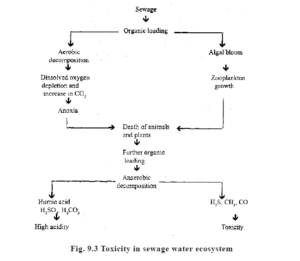
subjected to treatment for the removal of colloidal and semisolid suspension by dilution, H2S, CO2, CO, NH3, CH3 concentrations are brought below the normal levels.したがって、 through primary treatment the supernatent effluent is separated from the sludge.
NS NS emic NS l NS reatment:
In chemical treatment, several dissolved substances, harmful germs and aggressive odours are eliminated. Inexpensive precipitants,
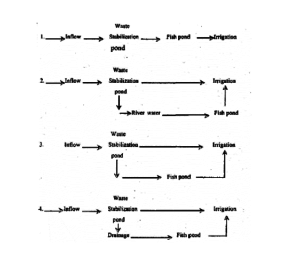
coagulants, chelating substances, disinfectants, deodorising agents, etc. are used in this treatment. The sewage water is also treated with chlorine, bleaching powder and copper sulphate. It is also known as secondary treatment.
Biol o gica l NS NS e atment :
In biological treatment of sewage care is taken to promote bacterial growth. Bacterial action promotes oxidation of organic matter. The end products nitrogen oxides, bring about rapid growth of algae, particularly the blue green Microcystis. This arrests anoxia of water by raising the dissolved oxygen, lowering the CO2 content and by increasing the pH from acidic to alkaline levels. The algal bloom reduces the concentration of dissolved salts in the sewage water.
ポー NS NS 馬 NS ag e 男性 NS
NS e rtil 私 zati o NS
Fertilization of sewage-fed pond is done in two phases, pre-stocking and post-stocking fertilization. In dewatered and sun dried ponds, primary treated sewage effluent is taken up to a depth of 60 – 90 cm during premonsoon months (April – May). The effluent is then diluted with rain water or freshwater till the pond BOD reduces to 50 ppm. Periodic fertilization with sewage effluent is carried out after two months of stocking to maintain nutrient status and productivity of the pond at a desired level. The quantity of sewage effluent to be allowed into a pond solely depends on its quality determined on the basis of BOD values.
Limin NS
Application of lime in sewage-fed ponds is most essential. It is a useful promotor of fertility in ponds and act as a disinfectant against harmful microorganisms. Prestocking liming is recommended at a rate of 200 – 400 Kg/ha as initial dosage. Subsequent liming of 150 – 200 Kg/ha on standing crop is necessary throughout the year during sewage intake and during winter months, when parasitic infection is more.
Stoc k の NS
The cultivable species of freshwater fish such as Indian major carps and exotic carps can be grown in sewage-fed waters. Considering the high carrying capacity and high productivity of sewage-fed ponds with respect to plankton and benthic fish food concentration, fish are usually stocked at a reasonably higher density. The stocking rate recommended 10, 000 – 15, 000 /ha of carp fingerlings of about 10 gr. each and it is preferred to stock more of omnivorous scavengers and bottom feeders to maintain fish pond hygiene for higher yield. The ratio of carps for better output is rohu 2.5 :catla 1:mrigal 2.5 :common carp 2 :silver carp 2. Omnivores and bottom feeders directly consume the organic detritus of sewage-fed ponds, and thereby directly helping in keeping the pond aerobic. The stocking rate of fish is kept on a higher side considering the profuse growth of algae which will otherwise grow, decay, putrify and finally deplete the oxygen concentration of fish pond.
E NS ologica l NS onsideratio NS NS NS NS NS lga l 続き NS o l
Maintenance of aerobic conditions of the sewage-fed pond is highly essential and as such early morning dissolved oxygen level should not deplete below 2 ppm for carps. The BOD should be below 30 ppm for better survival of fishes. CO2 concentration should not be allowed to increase beyond 20 ppm to keep the toxicity level within tolerance limit for fish and to control algal blooms. Liming helps in regulating CO2. Heavy metal pollution, もしあれば、 can be controlled by introducing water hyacinth at the pond margins and barricading them with bamboo poles to prevent spreading of the weed throughout the water surface of the pond.
Algal control is a must to maintain proper dissolved oxygen. It should be more than 2ppm and optimal 5 – 6 ppm in a sewage-fed pond. The presence of silver carp regulate the algae in the culture system. When biological control of algal bloom is not possible, application of simazin at rate of 0.5 – 1 ppm is recommended.
短所 NS ro l o NS NS NS uat 私 NS inse NS NS
Aquatic insects are found in sewage-fed ponds, especially more during winter months. The insects of the pond mainly comprises hemiptera, coleoptera, odonata, zygoptera and trichoptera. Dipteran insects dominate, especially the larval stages of Chironomids associated with annelid worms of tubificidae.
Other insect larvae of the sewage-fed ecosystem belong to tubanidae, anthomyiodae, tetanocoridae, etc. The predacious hemiptera, coleoptera and a few odonata, zygoptera are needed to be controlled. An emulsion of soap and vegetable oil at a rate of 4 Kg/ha and in the ratio of 1:3 is applied to control these insects.
NS arvestin NS NS NS イー e l NS
After 5 – 6 months culture, when the biomass grows to an optimal level, the stocking density is thinned out through periodical and partial harvesting. The water depth of the pond is reduced by dewatering for final harvest when the fishes are removed by repeated drag netting.
In a mixed culture of five carp species in sewage-fed ponds, the yield rate varies from 5.4 – 8.6 t/ha/yr with an average production of 7 tonnes/ha/yr. The fishes are around 500 gr. to 1000 gr. during culture operations.
The recurring expenditure on sewage-fed fish culture is meagre compared to that of fresh-water fish culture. This culture is lucrative and a fish farmer can obtain an income, on an average of more than Rs. 40、 000 /ha/yr. If murrels are cultured in oxidation ponds and the excess sewage is utilised for the cultivation of crops, the revenue could be further augmented.
Full utilization of sewage has manifold benefits. Outbreak of epidemics can be prevented. Biogas from sewage can be used as fuel to ease the pressure on LPG, electricity and fuel wood. Slurry from biogas plants can be used as a manure. Water reclaimed from sewage can be recycled for irrigation and pisciculture.その上、 scientific handling of sewage generates employment opportunities to educate youths. More than all these water bodies, rivers, particularly can be saved from sewage pollution by proper management.
Utilisat 私 o NS o NS Bioga NS Slurr y NS NS fi NS NS カルチュ NS
In our country, especially in rural areas, mere has been a tremendous growth of biogas plants as a source of non-conventional energy. Biogas is also called as gober gas. The biogas plant is a device for conversion of fermentable organic matter, especially cattle dung into combustible gas and fully matured organic manure or slurry by anaerobic fermentation. The nutrients of the generated slurry can be harvested for production of feed and food and replace conventional inorganic fertilizers. Due to lack of knowledge and communication to farmers, most of the generated slurry is not used properly. The biogas plant can also digest night soil, poultry and piggery droppings, weeds and other fermentable materials along with cattle dung. Biogas slurry consists of 1.52 mg/lit nitrogen, 0.82 mg/lit of phosphorus and 0.83 mg/lit of potash. Biogas slurry is rich in humus and contains nutrients mostly in the available form. The oxygen demand for its decomposition is much less than for raw cattle dung or any other organic manure. Due to the high nutrients value of biogas slurry, it can be used as a fertilizer in fish culture ponds. Slurry application improves the soil structure. It enhances zooplankton production in water.
Gober gas plant is a composite unit of a digester and gas holder. Gas holder floats on the top of digestor, wherein gas is collected. In the plant, the whole system is based on continuous operation. The organic manure to be fermented is fed in semi-fluid form at the one end and the fermented spent slurry is extracted at the other end periodically with disturbing the whole system. Slurry is odourless, free from flies and other sources of infection.
In a preliminary experiment, the slurry from plant is drained into a fish pond of 0.15 ha area, which is stocked withrohu, カトラ、 mrigal, common carp, silver carp and grass carp at a density of 7, 500 fishes/ha, resulted in production of 5080 kg/ha/11 months (762 kg/ha/0.15 ha/ 11 months).
This experiment indicates that the high production potentiality of the pond using only biogas slurry as fertilizer. In Madurai Kamaraj University, the experiments conducted with Oreochromis mossambica by using only biogas slurry as fertilizer and found the enhanced production. They indicated that males grow larger than females. They got the production of 2.4 tonnes/ha/125 days with a stocking density of 30, 000 juveniles/ha and initial size of O.Sgm. They also got 4.4 tonnes/ ha/125 days with a stocking density of 60, 000 juveniles/ha and initial size of 0.5 gm.
In a polyculture experiment with Indian major carps at ratio of 4 rohu:3 catla :3 mrigal at a density of 5000/ha by using only biogas slurry (0.15% concentration every three days) as feed and fertilizer resulted 5500 kg/ha/yr. The fishes grow well with only slurry, without any supplementary food and other fertilizers, this reduces the cost of feed and fertilizer. But there is little chance of microbial attack, it can be controlled with good management. In an experiment at ANGRAU with biogas slurry in different dosages – 5000, 10、 000 and 15, 000 kg/ ha/yr applied in different fish ponds 1/3 of the slum’ was applied initially and the remaining slurry was applied in equal fortnightly instalments.カトラ、 rohu, mrigal, common carp, silver carp and grass carp were stocked at a ratio of 2:2:1:1:2:2 at the rate of 5000 kg/ha. The production was obtained was 1956. 2096, and 2052 kg/ha/yr in 5000, 10、 000 and 15, 000 kg/ha/yr biogas slurry treated ponds without any supplementary feed, or organic and inorganic fertilizers. The fish production obtained was 5470, 7230 and 6050 kg/ha/yr in the above three slurry treated ponds with supplementary feed, but without organic and inorganic fertilizers. Supplementary feed was given in the form of rice bran and groundnut oil cake in the ratio of 2:1 at the rate of 5% body weight of fishes.
The experiments indicate that high production offish in biogas slurry treated ponds and at the same time the expenditure is lesser than normal culture systems because organic and inorganic fertilizers and supplementary feeds are not used. By using the waste of biogas plant in the form of slurry, profitable fish production can be obtained. Fish produced through recycling of organic manure is more healthy and has less fat accumulation. The recycling system, しかし、 requires effective management. One of the problems is the difficulty in balancing the expertise needed in fish animal husbandry. Over concentration on one system may be detrimental to the other. The monitoring of dissolved oxygen level in pond water is absolutely essential when the integrated systems are adopted. Excessive manuring causes water pollution. It rapidly decreases oxygen level in the water, produces toxic gases like ammonia often leading to fish kills. Application of manure should be regulated according to the dissolved oxygen level which is very essential for the rapid growth of fishes. No serious health hazards due to slurry was noticed, though animal excreta is a potential source of infection.さらに、 fermentation of the manure in a biogas plant kills and destroys the eggs of parasites.
NS ag e NS NS NS e NS Cul NS u NS
Cage 文化
Fish culture in ponds is the primary method of freshwater and brackish water fish culture.しかし、 there are other methods of fish culture used in places where pond culture is not possible. Other methods of fish culture are those carried out in dams and reservoirs, ケージ、 pens and rice fields. Due to exponential growth in population and the great pressure on land for habitation and agriculture, the large water resources such as tanks, 湖、 reservoirs and canals, which have been not exploited so far can be used for augmenting fish production. Due to the large water bodies, the management has complex problems. The best thing seems to be captive, regulated culture of suitable fishes in impoundments installed in them.
A practical approach to increase the aquaculture production could be takeup as fish husbandry in cages, pens and other enclosures in large water bodies like tanks, 沼地、 湖、 reservoirs and canals along with open ranching, without prejudice to their other use. By virtue of the short gestation period, these unconventional systems yield quick results with minimum conflict of interaction on land demand with agriculture and other animal husbandry practices. Enclosure aquaculture can play a significant complementary role in augmenting yields from our capture fishery resources, especially those having large predatory fish population.
Cages and pens could be utilized as nurseries for raising fish seed and for the grow-out of table fish. They dispense with the need for land based nursery forms cutting down on the cost of seed production. Investment on long distance transport of fingerlings for stocking reservoirs and handling mortality can be avoided by insitu rearing of fry in cages and pen installed in them. One of the impoundment cultures is in cages. Many countries are practicing cage culture of fishes and prawns successfully. Cage culture has also been started in India only recently.
NS dv NS ntag e NS o NS cag e NS ultu NS e
The advantages of cage culture are
- Large water bodies could be utilized better for fish culture.
- The flowing water could be better utilized for fish culture.
- Cage culture reduces demands on prime agricultural land for fish farm construction.
- Free exchange of water.is possible in cages.
- High density stocking and intensive feeding of the stock can be achieved, which gives high yield per unit area.
- Decomposition and degradation of concentrated waste products do not arise in cage culture.
- Oxygen depletion can not be found in cages. Monitoring growth of the stock, diseases is easy.
- Considerable reduction or extreme compactness in the production area is thus achieved in cages.
- Several units of cages could be installed in a water body for gainful employment and income.
- Harvesting is simple and easy.
- Considerable indirect employment will be generated.
- With ca’ge culture, the animal protein production can be increased.
- The left over feed, faecal matter and metabolites enrich the water body in which cages are installed.
ロカ NS io NS o NS ケージ NS
The ideal location for cages is weed-free shallow waters. Flowing water is best for cage culture. The site should have adequate circulation of water. The wind and wave action should be moderate. The water should be free from pollution and weeds. The area should be easily accessible. Cage culture can also be practiced in areas like swamps where there is water not being used for any other purpose. Seed should be available in the vicinity. A ready market for fish should be available near the site. Flowing waters with a slow current of 1 – 9 m/minute’lare considered ideal for cages. The cages should be a little away from the shores to prevent the poaching and crab menace.
NS y pe NS o NS NS NS ge NS
Cages can be circular, cubic and basket like and the shape has little effect on yield rate. Cages may be floating at the surface, just submerged or made to sit on the bottom. Floating cages may be the most appropriate for Indian conditions and the experiments conducted in our country for seed rearing, grow out, nutrition and biomonitoring have been in such enclosures. The size of the cage depends on the type of culture operation and the support facilities available. Large cages are difficult to handle. Although the cost of small cages is higher, handling is easy with low risk of losses. The nursery cages are generally of the floating type, while the ground cages may be floating or immersed depending on the species cultured.
NS オン NS tru NS ti o NS o NS ca NS e NS
The type of material used for cages (Fig 9.4) will depend on the type of culture whether they are used for fry or table fish rearing. Bamboo interspred with wooden planks for cages is commonly used in Indonesia, Vietnam, Thailand and Kampuchia. Thick polythene fibers are used for cages in Japan. Metallic grills are used in—LISA. Aluminum frame and nylon webbing is used for fabrication of cages in USSR and West Germany. In our country, fairly fine mesh nylon netting are used. The cage material are used mainly depending on their cost and availability.
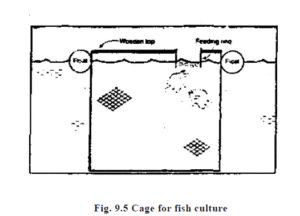
Small cages with mats of locally available plant materials such as palm leaves. カヤツリグサ stem, Phragmites stem and split bamboo are used in India. These cages are of 1 – 2 m2 area. Split bamboos are joined with the help of coir rope or nylon twine. The cages are installed in the water body with bamboo supports at the four comers and the bottom. Materials other than bamboo mats are decayed by the third month and collapsed within a year. Split bamboo cages remain for over a year. Circular cages with thick bamboo stipes tied with nylon twine the durability of over 3 years.
Cages made up of monofilament woven material of 1 – 3 mm mesh size and 0.3 – 1 mm thickness are light and easy to handle, but remain for 6 to 12 months. The exposed part become brittle and gives way. Knotless nylon webbing of 3 – 6 mm mesh size and knotted nylon webbing of 7 -15 mm mesh have been found to be most durable. Cages made of water – proof surface painted light conduit pipe frames with a 10 m2 area are light in weight and have long durability. A battery of cages is enclosed with a bamboo catwalk and the whole structure floated by sealed empty barrels of 200 1. capacity.
The circular cages with conduit pipe structures which can be easily assembled have been designed with nylon webbing in different dimensions. These cages are floated freely on the water surface with the help of 3 – 4 sealed HDPP jerry cans. These arc extremely useful for cage culture. Due to their circular is shape the wave action in minimum. These can be moved from place to place with least water resistance. Due »their circular shape, the rearing space is maximum in side. The aeration and water circulation is better in these cages. Fishes can move in the cages with least obstruction.
Auto-floating, highly durable HDPP pipe frame nylon net cages with 36 m2 area are also used. These are light in weight and not need floats to float on the water surface.
The size of the cages depend on die scale of culture, species cultured, インフラストラクチャー、 financial and management resources. The size varies from 2- 10m3 in India, 100 – 150m3 in Indonesia, 60- 180m3 in Kampuchia. 40 – 625 m3 in Vietnam and 30 m3 in Holland. Large cages are operated in Germany with 42 m diameter and 16, 500 m3 at the water depth of 12 m. These are provided with automatic or water jet pump-feeding, special handling and harvesting accessories.
Cal NS ura NS l e 魚 e NS 私 NS NS 年 NS NS NS NS NS ei NS sto NS 親族 NS
The fishes used for the cage culture should be adaptable to captive culture, fast gro\vng, hardy and disease resistant. The Indian and Chinese carps, tilapia and magur can also be cultured where trash fish is cheaply and abundantly available. In Thailand and Kampuchia the cat fishes, Pangasius species are being cultured in cages successfully. Koi and Singhi are also cultured in India in cages.
インドで、 the nursery cages are stocked with carp fry at the range of 150-700 fry/in2 in caaes with different materials. In Japan 15.000-62.000 fry/nr2 of grass carp fry are stocked in nursery cages. The common carp stocking density is 150/nr2 in Kampuchia, 133 -417/nv1 in Indonesia and 80 – 360/nr2 in Vietnam. In Thailand Pangasius sutchi, P. larmmdi と P. micronemus fry are stocked at densities of 150-300/ nr2 in cages of size 1-10 m2 area with a depth of 1.5m. 。
The number of fish that can be stocked in a cage is variable and depends on the canying capacity of the water area, water quality and rate of circulation, the fish species, the quality and quantity of feed supplied. A safe level may be about 3000 to 6000 fish/ ha. In able – fish rearing cages in India, the fingerlings of carps are stocked at density of 30 – 38no /m2 . The tilapia, Oreochromis mossambicus can be stocked a rate of 100 – 200 m-2. Murrels can be stocked at density of 40-100m2.
馬 NS ag e 男性 NS NS NS y 私 エル NS
The cage culture can be taken up in two phases – nursery phase and table – fish rearing phase. In nursery phase of cage culture, the spawn or fry are reared to fingerling stage in 2-3 months. Different feeds can be used for culture in nursery cages. Groundnut oil cake, 米ぬか、 egg yolk, soyabean cake, soyamilk and soya flour are used as food for fry in nursery cages. The silkworm pupae are also tried as supplementary food.
The initial size of fish to be stocked in the cages will depend primarily on the length of the growing season and the desired size at harvest. The carp fingerlings for stocking in 16-20 mm mesh cages should be over 10 gr. to expect a final size of over 500 gr. within 6 months. It should be ensured that the fingerlings used for stocking are healthy and disease free. All the fish should be actively moving. It is ideal to stock cages in the cool part of the day.
インドで、 the growing season is almost year round, except for December – January in northern parts, where the temperature is low during these winter months. Very little natural food such as plankton, insects and various other organisms enter the cages and is available to fish.しかし、 supplementary feeding is essential in the cage culture to get high production. The types of feed used will depend on the species cultured and their prevailing market prices.ムレルス、 例えば、 require to be fed with fish, shrimps or other animal matter. Most of the fish cultured are omnivorous and they accept both plant and animal byproducts such as oilcakes, brans, fish meal and silk worm pupae.
Cage fish are generally fed at least once daily throughout the growing period to get better growth. The quantity of feed to be given is important, since under-feeding will reduce growth and production, while over-feeding will waste costly feed and can affect the water quality. A method used to estimate the daily feed to be give in cages is based on the total weight of the fish. The feed is usually expressed on percentage of body weight. In carps, the feeding rate is 4 – 5 % of the body weight per day until they attain approximately 100 gr. And thereafter at 2 – 3 %.
In table-fish rearing phase, involving the high-tech system of saturated stocking and feeding on enriched formulated feeds, the production recorded in common carp is 25 – 35 Kg m° month’1 in foreign countries. The channel catfish, Lactarius punctatus in USA yielded a production of 20 – 35 Kg/nr3.アフリカで、 tilapia yielded 17 Kg/nr3and trout produced 15 Kg/nr3. The food quotient in these cultures varied from 1.3 – 2.1.インドで、 a production of 1.5 – 2.5 Kg nr:month’1 common carp was achieved with mixed feed of silk worm pupae, ground cake and rice bran. Catla yielded 1.4 – 2.7 Kg nr2 month’1 with groundnut cake and rice bran with the food quotient 5.6. Tilapia produced 1 – 1.6 Kg nr2 month’1 with a mixture of rice bran, groundnut cake and commercial cattle feed and food quotient ranged from 1.8- 2.3 . About 1 Kg nr2 month”’ of murrel and 0.3 – 1.5 Kg nr2 month’1 of catfishes, singhi and Koi are obtained.
Ca NS e cu l 火 NS o NS pr NS wn NS
The freshwater and marine prawns are also cultured in cages. The cages are stocked with wild or hatchery reared post larvae. Commercial scale rearing of post larvae in floating and fixed nursery cages (3.7 X 2.7 X 1.3 m) has been done with considerable success. They are fabricated from fine mesh (0.5 mm) nylon netting, supported by bamboo poles which are driven into the bottom of the water body. The optimal stocking density reported is 30, 000 post larvae/cage (2 .310 m’3). Feed is provided in trays fixed inside the cages.当初、 the post larvae are fed on a paste of finely ground trash fish, later are fed with fresh mussel meat.
Pe NS カルチュ NS e
Recent results in the use of cages, pens or enclosures and recirculating water systems suggest some ways of compact intensification of production in aquaculture given the accessory inputs. This practice may provide great possibilities in the future in certain selected and suitable areas.
Aquaculture in open waters through the use of pens or enclosures is also a means of minimising the limiting effect of metabolities and pollutants on cultivated stock. Greater production in very limited space has been found possible under those situations. Production figures from these types of aquaculture environments approximates to 4 -10 t/ha/yr in Laguna lake in Philippines.
Se l ectio NS o NS NS ite NS NS NS pe NS カルチュ NS
i) Low tidal amplitude
ii) Fish pen – site must be sheltered as much as possible against high winds
iii) Depth not less than 1 meter during lowest water level
iv) The best site is on the leeward side of the prevailing winds with moderate flow of current especially in a place where current in overturning
v) Water with stable PH slight variation is best. Avoid turbid and polluted water.
vi) Muddy clay and clay – loam soils are best types of bottom soil. Too much still and decomposing organic matter must be avoided.
NS ons NS ruc NS io NS o NS NS en NS
Pens can be constructed with the help of bamboo screens and nets
NS 。 Co NS stru NS tio NS o NS NS e NS NS w 私 NS NS NS NS mbo o scre e NS NS
Split bamboo should not necessarily be shaped and rounded. They are soaked in water for two weeks and then dried for one week. During the soaking and drying period, bamboo poles are prepared and staked at the chosen site according to thedesired size and shape of the fish pen. After stacking poles, bamboo splits are closely woven extending to a length of more or less five meters and made into a roll. After weaving, these are set by stretching them from one pole to the other interrurned or just set inside or outside close to the poles from bottom to top. They are tied every pole by rubber and one provided with sliced rubber around, liming one on top and one at the bottom. These splitted rubber prevent them from wear due to wave action. Nursery nets which should be 1/16 th to 1/10 th of the area of the fish pen can be set before constructing the fish pen or after it is set.
NS NS オン NS tr u cti o NS o NS NS e NS wi NS NS NS et NS
Construction of a fish pen made out of synthetic netting is easier than one made of bamboo screens. Netting materials can be kuralon, ナイロン、 cremona, tamsi. etc. An ordinary fisherman can connect the nets into the fish.pen after taking into account the desired height or depth of the pen site. After the net is constructed , the poles are staked in mud after making a provision for the front rope and tie rope at the interval of 1.0 – 2.0 m per stake and also the provision for float rope. In preparing the poles, all nodes are cleaned except one node with brunch protending one inch which is staked in the mud from 15 – 30 cm or more depending upon the depth of soft mud. With this node the foot rope is tied, and these together with the bottom net are staked in the mud. Boulders can be used as sinkers in the absence of lead sinkers. Bamboo tips of 1-1 Vi m are also used to stake the bottom net with a foot rope firm into the mud to avoid escape of the fish stock. Construction of the nursery net may be done before or after the construction of the fish pen. They should have a free board of about 1 meter above the normal water level to prevent entry or exit of fishes by jumping and as a precaution against water level fluctuations. Metal and metal coated with HDPP screens are often used for pens which is highly durable.
Cu l 火 NS
Pen culture is extensively practiced in Japan, Peru and Philippines. Fish formers in Laguna debay and Sansabo Kekes stock milk fish fingerlings in pens and grow them to marketable size (200 g or above). Prawn are also similarly cultured. Very little work has been done on pen culture of fishes in India.
Traditional trapping and extensive culture of tiger prawn, milk fish, pearl spot, mullet, bekti and thread fins are done in some sort of pens and enclosures in canals joining the backwaters in Kerala and in the shallow areas of Chilka lake (Janos) in Orissa. The pens are made by weaving split bamboo or with netting. The enclosing of fishes is done usually after the monsoon season upto late autumn and the culture period lasts for about 6 to 8 months. The size of Janos in the Chilka lake varies from 5 to 500 ha. Since the stocking and harvesting are not done systematically, precise production S3* figures areajatavailable. The yield, しかし、 is estimated to be about 60 Kg/ha/season.Seed rearing experiments were conducted in a split bamboo enclosure of 247.5 m2 reinforced with a nylon netting in Punarswamy Bhavanisagar (Tamilnadu). It was stocked with mrigal (size 7 mm) and Labeo fimbratus (size 5 mm) spawn at the rate of 4.6 million/ha and usual farm practices were followed. In 30 days mrigal attained a size of 38 mm and fimbriatus, 28 mm. At the time of conclusion of the study after 3 months, the former had attained a size of 88 mm and the later 75 mm. The overall survival obtained was 27.8 %.
Major carp seed rearing in pens is being done every year from 1982 onwards in the Tungabhadra reservoir in Karnataka. A shallow bay of the reservoir near Hampusagara is cordoned off with bamboo mats reinforced with Casuarina poles and lined with mononlament cloth during the summer months, prior to the reservoir getting filled. The pen is divided into several compartments with bamboo mats, lined with mononlament cloth. When the nursery pen, get water with the filling of reservoir, they are stocked with spawn of carps. The stocking density varies from 5 to 20 million spawn ha. The feed given is a mixture of ground nut cake and rice bran (1 :1). After 2 to 4 months the fingerlings
are enumerated and released in the reservoir. NS 生存 varying from 11 to 30 % is obtained from the varies nursery pens.
A pen culture experiment for raising cattle and rohu in Mamkamaun a flood plain lake in Gandak basic yields a computed production of 4/ ha/6 months. The experiment was conducted in a bamboo screen pen (1000m) and the stock was fed with a mixture of nee bran and mustard cake, apart from a feed formulated from the aquatic weeds collected from the lake. Since intrusion of fishes from outside including predators is possible in pens. It is important to stock larger fingerlings (over 50 g size) to ensure better survival. It is be desirable to have scale pen culture. The species mix and stocking rates will mainly depend on the natural food supply, supplemental feeding strategy, water depth and the duration of rearing.
Sup NS レム e nta NS y NS e edi NS NS
The fish pens that are densely stocked with 10-20 fish per square meter, generally need regular feeding at the rate of 4 -10 % of the total body weight of the stock at least once 3 week, or it could be divided into daily feeding. The amount of food to be given depends on the condition of the culture fish which could be checked through sampling at least once a month.
Managemen NS
Management offish pens is more laborious and demanding than a fish farm, because there are more risks in managing fish pens. Fingerlings are liable to escape once a single bamboo split breaks or a small portion of the net is torn. Every now and then the fish pens have to be checked for any holes or breaks.
The fish pen site has to be laid idle at least one month a year so that excess food and other organic matter are completely decomposed before stocking with new fingerlings. If the site is not sheltered it would be advisable to remove the net or split bamboo screen during the stormy season and repeat during fine weather condition.
NS ええと NS ar y
The culturable species of air breathing fishes are Fig. 9.1
NS NS NS nn NS NS NS NS NS それ u s – Big or striped murrel or snake head fish
NS ハン NS punctatu s – Spotted murrel
Channa marulius – Giant murrel
Clarias batrachus – Magur
Heteropneustes fossilis – Singhi
Anabas testudineus – Koi or climbing perch.
Many species of trout are grown, but the three most common of them are the rainbow trout, Slamo gairdneri また Oncorynchus mykiss, the Eurorean brown trout, S.trutta (Fig. 9.2)and the brook trout, Salvelinus fontinalis. Trouts have a streamlined body, narrow gill openings and reduced gills. Trouts are adapted to highly oxygenated waters and freezing point temperatures. Trouts have great power of locomotion with clinging and burrowing habits. Mouth is modified with rasping lips for food collection from pebbles, rocks, NS..
Sewage is a cloudy, dirty and odorous fluid from our toilets and kitchens of our houses. It has minerals and organic nutrients in a dissolved state or dispersed in a solid condition. Disposal of sewage has become a global problem because of urbanization. It is an effect of demophora, i.e. an unabated growth of human population.近年では、 sewage has become a major pollutant of inland waters, especially rivers. It is a source of many epidemics. It is responsible for a serious threat to soil and water ecosystems. The approach towards waste water disposal should be utilization of this residue with the concept of their reuse or recycle through an ecologically balanced system involving mainly aquaculture. The utility of sewage effluent to enhance fertility of freshwater ponds has long been known in many countries of the world.
In our country, especially in rural areas, mere has been a tremendous growth of biogas plants as a source of non-conventional energy. Biogas is also called as gober gas. The biogas plant is a device for conversion of fermentable organic matter, especially cattle dung into combustible gas and fully matured organic manure or slurry by anaerobic fermentation. The nutrients of the generated slurry can be harvested for production of feed and food and replace conventional inorganic fertilizers. Biogas slurry enhances fish production.










